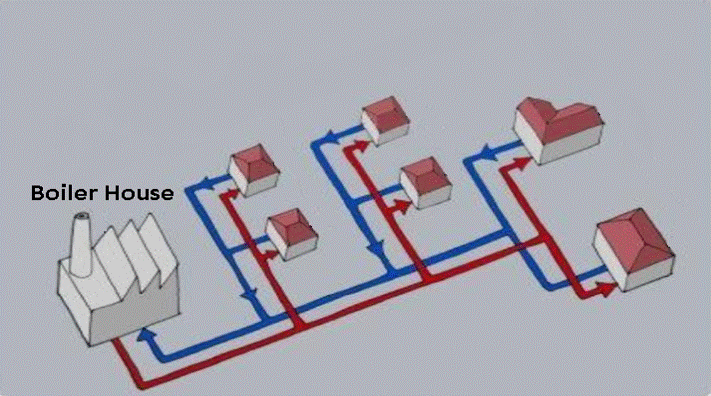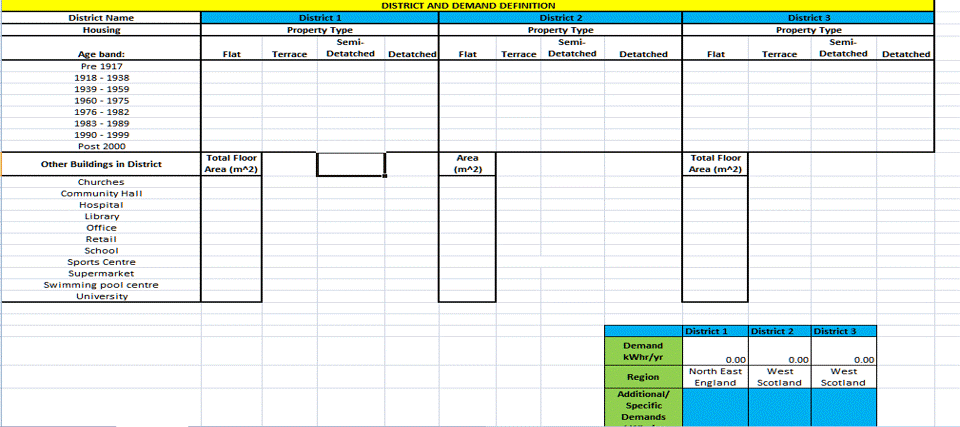Background and Introduction
Heating accounts for around 40% of the UK energy bill. Decarbonising our electricity only solves part of the problem faced by governments wishing to reduce emissions that contribute to climate change. The roadmap for the transport sector seems relatively clear, with investment in electric vehicles and hydrogen fuel cells from government and industry. However, the heating sector has no clear or easy route to decarbonisation. Scotland aims for 11% renewable heat by 2020 and seem unlikely to meet that target, even with the Renewable Heat Incentive. We identify three routes to district heating.
- A Boiler Approach- A single central boiler providing only heat for a number of surrounding properties through piping networks that need to be installed, at great expense and inconvenience in the case of a retrofit. Examples of boiler heating can be found at the Findhorn eco-village has a number of these systems in place burning biomass to remain carbon neutral.
- The CHP Approach- Another conventional system of district heating which work in the same way as above but also generating electricity. So long as there is a demand for the electricity generated, or a guarantee that the National Grid will accept the surplus energy produced, this is a very worthwhile option in terms of savings. Examples would include the Cube Housing project in Maryhill, or the University of Strathclyde Estates Services.
- Electrical Heating- Traditionally this approach is viewed as inefficient, costly and a last resort if there is not an available fuel source or gas main. However, recent innovations have shown the path to a new paradigm in District Heating. The Nines project in Shetland established a self-sustaining smart grid on the island using the abundant renewable energy in the area. The smart grid was able to manage the renewable resource to meet demands, more importantly when there was an excess of energy, the grid management system charged 750MW of storage heaters across the island. This represents an innovative solution to renewable energy storage and decarbonises heating. Although Nines is in a situation where 100% renewable energy is available, making it a unique circumstance, this approach to district heating could be introduced in future as the UK increases its renewable capacity. The ability of the grid to manage, control and distribute the energy, and attach tariffs appropriate for the end user, the flexibility and opportunities available to this potential system are clear.
There is plenty of information available about each of these systems. However, we could not find any resource that compared the 3 approaches, defining where and when a particular system is better suited over another. This project aims to rectify this by developing a methodology for appraisal of each system in different circumstances. The end result will be a matrix of criteria and circumstance, grading each system between 1 and 10. We then consulted a focus group and industry contacts to weight each criteria and develop a method for the overall average grade of each heating system.
As an extra deliverable for the project, we proceduralised our methods for appraisal into a tool for general consumption. We hope that readers of this website will be able to download this tool and use it to assess district heating options for a project they are working on, or simply to explore the topic of district heating.
We hope you enjoy finding out more about the project by exploring this website!





